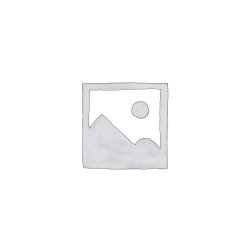Ultimate Guide to Pliers: Versatile Tools for Every Task
Ultimate Guide to Pliers are among the most versatile tools in any toolkit, essential for gripping, cutting, bending, and crimping materials. Whether you’re a professional tradesperson or a DIY enthusiast, understanding the various types of pliers and their specific uses can enhance the quality and efficiency of your work. From needle nose pliers to crimping tools, this guide will walk you through everything you need to know about pliers.
What Are Pliers?
Use pliers to hold objects firmly, cut, bend, or manipulate materials like wire or metal. They consist of two levers joined at a fulcrum, which multiplies the force applied at the handles, allowing the user to apply significant pressure with ease.
Types of Pliers
Pliers are categorized based on their design and intended use. Below are some common types of pliers you might find in a comprehensive tool set:
- Needle Nose Pliers: Needle nose pliers feature long, thin jaws that taper to a point. They excel at reaching into tight spaces and gripping small objects, making them ideal for electronics, jewelry making, and other precision tasks.
- Lineman Pliers: Lineman pliers, also known as linesman pliers, are robust tools designed for electrical work. They provide a strong grip and cutting edge, making them perfect for twisting wires, cutting through thick cables, and crimping.
- Slip Joint Pliers: Slip joint pliers offer adjustable jaws with two different positions, making them versatile for gripping, twisting, or turning objects of various sizes.
- Crimping Tool: Crimping tools join two pieces of metal by deforming one or both of them, which makes them essential for electrical work. Hydraulic crimping tools deliver extra power for heavy-duty applications, and the Knipex Multicrimp stands out for its precision and reliability.
- Snap Ring Pliers: Snap ring pliers, or circlip pliers, install and remove snap rings or retaining rings in machinery. They come in internal and external types, depending on the required direction of force.
- Water Pump Pliers: Water pump pliers, also known as groove joint pliers or channel locks, feature adjustable jaws that handle pipes and other large objects, making them essential for plumbing tasks.
- Hose Clamp Pliers: Hose clamp pliers specialize in installing and removing hose clamps, which are common in automotive and plumbing work.
- Hog Ring Pliers: Hog ring pliers install hog rings, which are widely used in upholstery and fencing. They are crucial for securing materials together with rings.
Features of High-Quality Pliers
When selecting pliers for your tool set, there are several key features to consider:
- Material and Durability: Choose pliers made from high-quality steel, ideally with a chrome or nickel finish to prevent rust and corrosion. Knipex pliers, for example, offer durability and long-lasting performance.
- Ergonomic Design: Comfortable handles are crucial for prolonged use. Ergonomic designs with cushioned, non-slip grips reduce hand fatigue and improve control, especially in precision tasks.
- Jaw Type: Different tasks require different jaw types. For example, serrated jaws provide a stronger grip on objects, while smooth jaws are better for delicate materials to prevent damage.
- Adjustability: Some pliers, like slip joint or water pump pliers, offer adjustable jaws for handling various object sizes. Your toolkit becomes more versatile with this functionality.
- Cutting Capability: For pliers with cutting edges, such as lineman pliers or flush cut pliers, the sharpness and precision of the blades are critical. Look for tools that maintain their edge even after extensive use.
Applications of Pliers
Pliers are indispensable in many fields, from construction and electrical work to automotive repair and crafting. Here are some common applications:
- Electrical Work: Lineman pliers, crimping tools, and wire stripping tools are essential in electrical installations and repairs.
- Plumbing: Use water pump pliers and hose clamp pliers to grip pipes and secure hose clamps in plumbing tasks.
- Automotive Repair: Use snap ring, hose clamp, and safety wire pliers for installing snap rings and securing components.
- Crafting and Jewelry Making: Needle nose, flush cut, and soft jaw pliers excel at handling small components with precision.
- Upholstery and Fencing: Hog ring pliers are vital for attaching fabric in upholstery and securing fencing materials, highlighting their versatility.
How to Pick the Appropriate Pliers
Depending on the work at hand, the proper pliers should be chosen. To assist you in choosing wisely, consider the following advice:
- Identify the Task: Determine the primary purpose of the pliers. For example, if you need to cut and strip wires, a good pair of lineman pliers or a wire stripping tool is essential.
- Consider the Material: Different pliers are made for different materials. For heavy-duty tasks, such as cutting thick cables, you’ll need a robust tool like Knipex cutters. While softer materials might require soft jaw pliers to prevent damage.
- Evaluate Ergonomics: If you will be using the pliers for extended periods, choose tools with ergonomic handles to reduce strain on your hands.
- Check the Brand: Reputable brands such as Knipex and Klein offer high-quality tools. By investing in these trusted brands, you ensure both reliability and durability.
Conclusion
Pliers are versatile tools that play a crucial role in various tasks across multiple industries. Whether you’re building a basic tool set or adding specialized pliers like snap ring or hose clamp pliers, knowing their types, features, and applications helps you select the right tool. High-quality pliers from brands like Knipex and Klein provide the durability and precision needed for both professional and DIY projects.



















